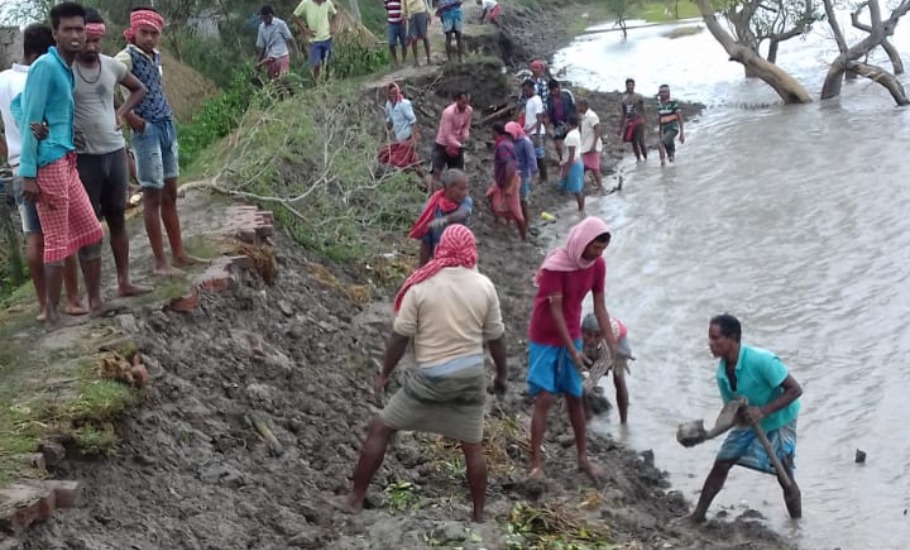
Sunderbans’ unsung heroes lead the region's post-Amphan fight back
Determined to prevent an epidemic in the post-cyclone period, a group of youths were seen wading through the water and mud, clearing carcasses from the flooded villages. They had swung into action immediately after cyclone Amphan blew over.

A nauseating stench wafted in the air as hundreds of rotting animals, birds and fish lay buried under pools of stagnant water and swathes of mud in many parts of Sunderbans, days after cyclone Amphan ripped through the region.
The carcass, if not traced and removed, could lead to an outbreak of waterborne diseases like cholera as it had happened in the past. At least 22 people had died of enteric diseases in the Gosaba area of Sunderbans alone due to water contamination after cyclone Aila in 2009.
Determined not to allow recurrence of such epidemic, a group of youths were seen wading through the water and mud, clearing carcasses from the flooded villages. They had swung into action immediately after cyclone Amphan blew over.
Rebuilding of villages, embankments in Sunderbans begins post Amphan
“In the past one week, we have buried innumerable animals and fowls from waterlogged areas and over-swept ponds,” said Surojit Mandal of Gosaba.
These youths, locally known as anchalik workers, are the frontline warriors of the delta region in its relentless battles against natural disasters. From repairing embankments, cleaning debris and clearing roads to distribution of reliefs, their helping hands can be found everywhere.
“Even when the cyclone was raging, we led other villagers to reinforce mud embankments which were giving in to the relentless pounding of water from the river,” Mandal said.
“It was due to their untiring labour and timely intervention, a greater catastrophe could be avoided,” admitted local legislator Jayanta Naskar.
Each gram panchayat in the island has at least six such workers deployed by the Panchayat department. Many of them fell victims to the cyclone’s wrath. Yet, without caring about their personal losses, they had been striving tirelessly to mitigate the sufferings of others.
“Our job is to ensure that Sunderbans get back to its feet after being mowed down by the nature,” said Suhas Mistri, another anchalik worker whose entire family has taken shelter in a relief centre.
“If not us, someone else from the village would have done this work because it is not easy to access help from outside in these landlocked islands after such natural calamities,” he said while collecting dead fishes and hens from pools of stagnant water, in a bucket. These will then be carried to some safer places little away from the village for dumping underground.
By Friday, eight days after the cyclone, the groups had almost cleared areas of dead animals and birds in 10 gram panchyats of Gosaba, and sprayed bleaching powder and other disinfectants.
“Hopefully, this time, there will be no outbreak of any disease as we could largely prevent water contamination by quickly removing the dead cattle and fowls,” said Animesh Mandal, a member of the South 24 Parganas Zila Parishad.
In the remaining four gram panchayat areas of the block, works of the local volunteers are being thwarted by the continuous seeping of river water through breached embankments despite the best efforts of the anchalik workers to plug the breaches.

